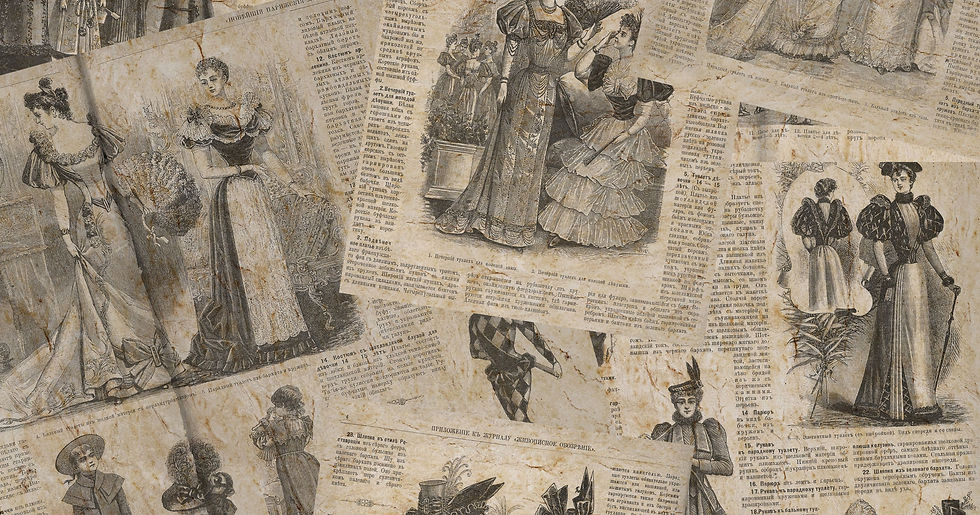The Paradox of Value in Modern Luxury Marketing
- Raffles Jakarta

- 6 days ago
- 5 min read
Updated: 4 days ago
In various luxury sectors, including fashion, jewelry, automobiles, and timepieces, a paradox emerges that characterizes contemporary value: the priciest materials do not necessarily result in superior products. What factors contribute to the higher demand and value of a simple leather handbag, a stainless steel watch, or a minimalist cashmere sweater compared to items adorned with diamonds, gold, or rare skins? The response encompasses more than merely the object itself. In the realm of luxury, the intrinsic value of materials is no longer the sole determinant of worth. Instead, it is the meanings intricately interwoven within them, along with their historical significance, rarity, symbolic value, and emotional impact.
The concept of luxury, in its most evolved form, has transcended the material domain. It now resides in trust, perception, and timeless narratives.
The Psychology of Value in Its Manifestation
Experts in luxury marketing agree that perceived value is a complex concept with multiple dimensions. It integrates four essential components: functional, emotional, social, and symbolic value. The functional value encompasses the quality, craftsmanship, rarity of materials, and performance of the item. The emotional value encompasses the pride and self-expression associated with ownership of an item. The concept of social value is derived from recognition and a positive reputation, whereas symbolic value is rooted in a profound sense of identity and legacy. Individuals purchase a straightforward stainless steel watch or a classic black Hermès Kelly bag to align themselves with a cultural symbol, representing qualities such as patience, knowledge, and a sense of belonging. The item serves as a means for individuals to establish their identity.
Conversely, products that emphasize visible extravagance may attract initial attention; however, they often lack the emotional and symbolic significance that sustains long-term desire.
Heritage as the Authentic Essence of Luxury
The value of a luxury brand is significantly influenced by its history, longevity, craftsmanship, and consistency. Examples of this include Hermès, Chanel, and Patek Philippe. Their strength lies not in novelty, but in consistency. Their archives represent a significant cultural asset that instills a sense of security and authenticity in buyers. Every piece conveys a narrative that links the past, present, and future. Jean-Noël Kapferer (2015) refers to this phenomenon as "luxury time compression": the capacity to maintain relevance across generations while remaining unaffected by seasonal trends. Heritage, in this context, emerges as a significant asset that may be elusive yet holds greater value than gold.
Desire and Scarcity Engineering
In luxury management, scarcity extends beyond merely producing items in limited quantities. The construction was executed with strategic considerations in mind. The most esteemed luxury brands globally excel at maintaining exclusivity. Waiting lists, exclusive client relationships, and sales events accessible only to select individuals create an impression of exclusivity. The communication is unequivocal: the product holds significant value due to its scarcity.
The Hermès Birkin, the Patek Philippe Nautilus, and limited editions from Gucci or Dior possess an air of mystery, not due to their unattainability in production, but rather because of their scarcity in availability. The manipulation of scarcity transforms ownership into a noteworthy accomplishment, representing a distinct form of social capital. Desire is an emotion that is managed with precision.
The Semiotics of Subtlety
In contemporary luxury communication, the significance of silence is increasingly surpassing that of overt displays. In the current global market, affluent individuals seek luxury that conveys subtlety rather than ostentation. Loro Piana, The Row, and Brunello Cucinelli exemplify the emerging trend of understated luxury. Their products may appear straightforward, yet they demonstrate a clear understanding of restraint, proving their value without the need for logos or unnecessary embellishments. Conversely, brands such as Versace and Jacob & Co., which are more expressive, emphasize the display of luxury, boldness, artistry, and narrative through a theatrical approach.

Image credit: Jacob & Co, from Luxury Bazaar (2024).
Each method caters to distinct cognitive styles: one emphasizes discretion while the other highlights exhibitionism. However, in terms of long-term value, subtlety often prevails. Sociologist Pierre Bourdieu (1984) noted that social elites seek to achieve distinction through understatement. The greater the silence of the object, the more significant its value becomes.
From Craft to Culture
Today, it is characterized by cultural craftsmanship, reflecting a brand's capacity to transform its history into a vibrant culture. Chanel's Métiers d'Art collection pays tribute to its artisans as custodians of culture. Gucci's digital "Vault" transforms its historical archives into an evolving narrative. Even straightforward brands such as Jacquemus leverage emotion, community, and storytelling to create aspirational ecosystems that resonate as authentic and personal. This shift in luxury indicates that the focus has transitioned from rarity to cultural significance. Leading brands do not merely select products; they also curate experiences, evoke emotions, and foster shared identities.
The essence of luxury is defined by meaning rather than materials
Does the paradox imply that traditional definitions of luxury are no longer applicable? In summary, the answer is affirmative. Materials continue to play a role in the narrative, yet they no longer define the narrative itself. Heritage stands out with unparalleled brilliance. While gold may possess a radiant allure, the significance of culture endures far beyond.
In a landscape saturated with visual distractions, a genuine luxury brand elevates simplicity to a revered status, transforming minimalism into a profound experience.
In today's context, luxury transcends the mere possession of rare items; it encompasses the complexity and depth of understanding that accompanies them.
From Acquisition to Comprehension
This paradox imparts a crucial lesson for emerging professionals: luxury management transcends the mere act of selling high-priced items; it focuses on transforming perceptions.
The Fashion Marketing and Management program at Raffles Jakarta equips students with a comprehensive understanding of advanced brand strategy concepts, including heritage storytelling, symbolic consumption, the psychology of scarcity, and the development of cultural capital.
Our graduates acquire the skills to not only track trends but also to comprehend the underlying forces that influence them. This equips them to excel in the rapidly evolving landscape of luxury fashion and branding.
Students at Raffles Jakarta are achieving recognition through prestigious international fashion awards, demonstrating that excellence is cultivated within our campus environment.
Arman POUREISA
Marketing Manager
References
Bourdieu, P. (1984). Distinction: A Social Critique of the Judgement of Taste. Harvard University Press.
Kapferer, J.-N. (2015). Kapferer on Luxury: How Luxury Brands Can Grow Yet Remain Rare. Kogan Page.
Urde, M., Greyser, S. A., & Balmer, J. M. (2007). Corporate brands with a heritage. Journal of Brand Management, 15(1), 4–19.
Vigneron, F., & Johnson, L. W. (1999). A review and a conceptual framework of prestige-seeking consumer behavior. Academy of Marketing Science Review, 1999(1), 1–15.
Luxury Bazaar. (2024). Jacob & Co Oil Pump Watch. Retrieved from https://www.luxurybazaar.com/grey-market/jacob-oil-pump-watch-2024
Forbes. (2024). The Stainless-Steel Paradox: Why Simplicity Commands Luxury Value. Retrieved from https://www.forbes.com
Business of Fashion. (2025). The New Rules of Luxury Branding. Retrieved from https://www.businessoffashion.com













Comments